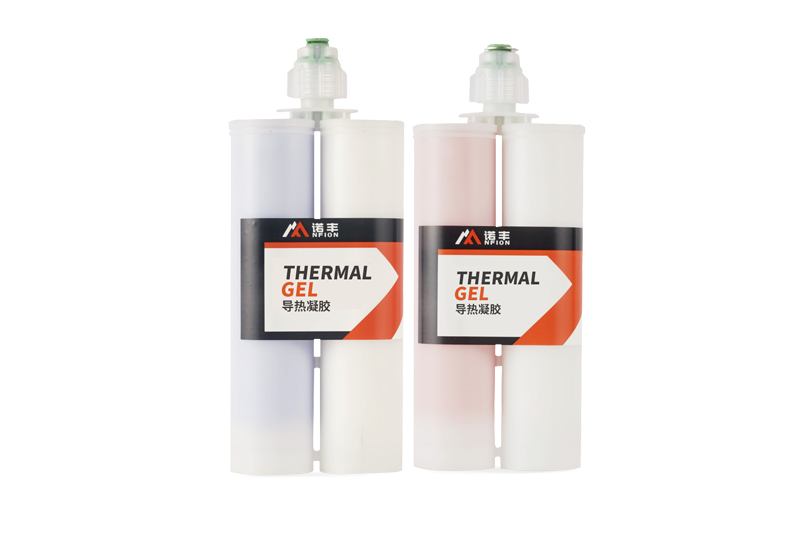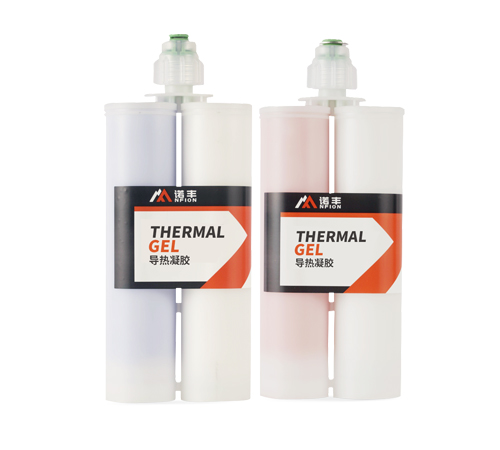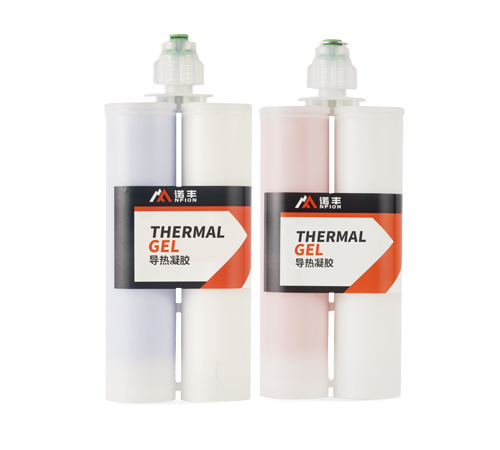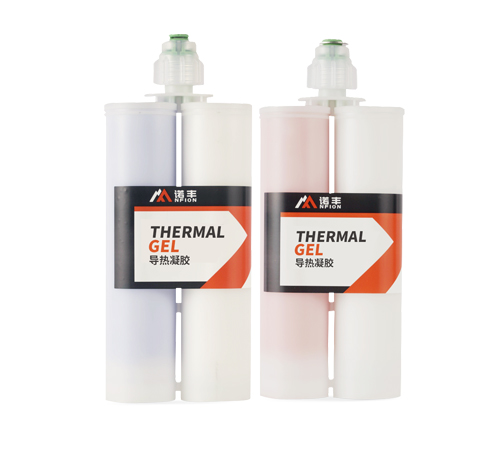
In high-heat load applications such as electronic devices, servers, 5G communication equipment, and new energy vehicles, thermal gel has become one of the key thermal management materials due to its excellent thermal conductivity and flexible filling capabilities. However, many engineers and buyers often have a core question when selecting thermal gels: How long does thermal gel actually last?
Through experimental tests and scientific calculations, we can conclude that the lifespan of thermal gel typically ranges from 5 to 10 years, but its specific lifespan is influenced by temperature, environmental factors, and material composition. NFION Thermal will combine the Arrhenius equation to calculate its lifespan, helping you understand the long-term reliability of thermal gel more clearly.
Key Factors Affecting the Lifespan of Thermal Gel
The lifespan of thermal gel is primarily influenced by the following factors:
✅ Temperature: Prolonged exposure to high temperatures can cause the molecular structure of thermal gel to age, affecting its thermal conductivity.
✅ Material Composition: Different silicone-based or non-silicone-based thermal gels have varying resistance to heat and oxidation, affecting their lifespan.
✅ Environmental Factors: External factors such as humidity, oxidation, and mechanical stress (e.g., vibration) can accelerate the aging of the material.
✅ Application Scenarios: The working temperatures of different devices vary. For example, servers usually operate at 50-60℃, while new energy vehicle battery management systems (BMS) may reach 70-80℃, directly affecting the lifespan of thermal gel.
Experimental Testing Methods for Thermal Gel Lifespan
(1) High-Temperature Accelerated Aging Test
In the laboratory, thermal gel is often subjected to long-term aging tests at high temperatures (e.g., 125℃) to observe changes in its thermal conductivity, adhesion, and physical properties. For example:
● If thermal gel maintains over 80% of its performance after 2000 hours at 125℃, it passes the test.
● By applying the Arrhenius equation, we can predict its estimated lifespan at actual operating temperatures (50-70℃).
Lifespan Calculation Based on the Arrhenius Equation
In material aging research, the Arrhenius equation is often used to predict the relationship between material lifespan and temperature. The formula is as follows:
AF= eEa/R*(1/Tuse-1/Ttest)
Where:
● Tuse: Actual operating temperature (in Kelvin)
● Ttest: Aging test temperature (in Kelvin)
● Ea(Activation energy): The aging energy of thermal gel, generally taken as 0.8 eV ≈ 77.2 kJ/mol
● R (Gas constant): 8.314 J/(mol·K)
● AF (Acceleration factor): Represents how many times the aging test result is equivalent to the actual operational lifespan.
Assuming: Thermal gel passes the test after 2000 hours at 125℃ (398K), let's calculate the actual lifespan under different application environments.
(1)Server Environment (50℃= 323K)
AF=e77200/8.314*(1/323-1/398)
AF=e5.43≈226
2000X226=452000 hours≈51.6 years
In a 50℃ environment, thermal gel's lifespan exceeds 10 years, showing that it is highly reliable for use in servers.
(2) New Energy Vehicle Battery Management System (60℃ = 333K)
AF=e77200/8.314*(1/333-1/398)
AF=e4.24≈69.3
2000X69.3=138600 hours≈15.8 years
In the battery management system of new energy vehicles, thermal gel's theoretical lifespan is approximately 15 years, but considering actual operating conditions, it typically lasts between 7-10 years.
(3) 5G Communication Equipment (70℃ = 343K)
AF=e77200/8.314*(1/343-1/398)
AF=e3.24≈25.6
2000X25.6=51200 hours≈5.8 years
In 5G communication devices, the lifespan is estimated to be around 5-6 years, which aligns with the 5-10 year expected lifespan in such high-temperature environments.
Conclusion: Thermal Gel's Lifespan Typically Ranges from 5 to 10 Years
Based on experimental data and calculations using the Arrhenius equation, we conclude the following:
✅ In a 50℃ server environment, thermal gel can last over 10 years, far exceeding the industry standard.
✅ In a 60℃ new energy vehicle battery management system, its lifespan is estimated to be around 15 years, but typically lasts between 7-10 years.
✅ In 70℃ 5G communication equipment, the lifespan is estimated to be 5-6 years, which meets the 5-10 year expected lifespan.
Additionally, in real-world applications, factors such as humidity, vibration, and oxidation may influence material aging. It is recommended to perform regular maintenance or replacement within 5-10 years to ensure stable thermal performance.
How to Extend the Lifespan of Thermal Gel?
To maximize the lifespan of thermal gel, the following measures can be taken:
✅ Choose high-quality materials: Use silicone-based thermal gels with high heat resistance and oxidation stability to improve durability.
✅ Optimize application processes: Ensure that the thermal gel is applied uniformly, reducing air bubbles and improving thermal conductivity.
✅ Control environmental factors: Avoid exposure to high humidity or oxidation environments, and add protective coatings or seals.
✅ Regular inspections and replacements: For long-running devices, it's advisable to maintain or replace the thermal gel within 5-10 years.
Summary
Based on experimental data and Arrhenius equation calculations, the lifespan of thermal gel is typically between 5 to 10 years, but the exact duration depends on temperature, environment, and material composition. In 50℃ servers, the gel can last more than 10 years, while in 70℃ 5G communication equipment, its lifespan is around 5-6 years. By carefully selecting materials, optimizing environmental conditions, and performing regular maintenance, the lifespan of thermal gel can be extended, ensuring the long-term stability of equipment. In the future, with advancements in new materials, the durability of thermal gel is expected to improve further, providing even more reliable thermal management solutions for electronic devices.

 CN >
CN >



